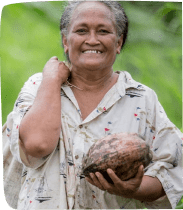Nearly 116 million people in eight African countries, hardest hit by severe water crises, lack access to drinking water.
Globally, flash floods have become 20 times more frequent between 2000 and 2022.
The climate crisis has dramatically worsened water scarcity in Eastern and Southern Africa over the past few decades, leaving nearly 116 million people –or 40 percent of the population – without safe drinking water, according to a new Oxfam report.
Climate change is supercharging extreme weather events like droughts, cyclones and flash floods, and has led to the disappearance of more than 90 percent of Africa’s tropical glaciers and the depletion of groundwater. This has had knock-on effects on Africa’s small-scale farmers, pastoralists and fisherpersons leaving millions without basic food, drinking water or income.
Oxfam’s report –Water-Driven Hunger: How the Climate Crisis Fuels Africa’s Food Emergency – published ahead of World Water Day, looked at the links between water scarcity and hunger in eight of the world’s worst water crises: Ethiopia, Kenya, Malawi, Mozambique, Somalia, South Sudan, Zambia and Zimbabwe. It found that the number of people experiencing extreme hunger in those countries has surged by nearly 80 percent over the past five years – reaching over 55 million in 2024, up from nearly 31 million in 2019. That is two in every ten persons.
The report warns that La Niña weather pattern, which will last through this month, will worsen floods in swaths of Southern Africa and South Sudan while causing severe drought in East Africa further threatening people’s food availability and income.
Globally, flash floods have become 20 times more frequent between 2000 and 2022 and the duration of droughts has risen by 29% since 2000, impacting the most vulnerable communities.
Existing poverty, deep inequality and chronic under-investment along with poor governance in water systems have compounded this climate-fuelled water crisis. African governments are currently meeting less than half the US$50 billion annual investment target required to achieve water security in Africa by 2030.
Fati N’Zi-Hassane, Oxfam in Africa Director said:
“The climate crisis is not a mere statistic—it has a human face. It affects real people whose livelihoods are being destroyed, while the main contributors to this crisis—big polluters and super-rich—continue to profit. Meanwhile, national governments neglect to support the very communities they should protect.”
And it’s not just the African continent facing these challenges, Pacific Island communities also rely heavily on rain as their primary water source. According to drinking water reports published by the World Health Organization, 43% of Pacific families access water from unmanaged sources like surface water or rainwater, making Oceania the least developed region for water access—ranking even behind sub-Saharan Africa. With climate unpredictability on the rise, more communities across the Pacific face water insecurity every year. Pacific leaders have called this the greatest threat to the region’s safety and security.
The Oxfam report also found that:
In the eight countries studied, 91 percent of small-scale farmers depend almost entirely on rainwater for drinking and farming.
In Ethiopia, food insecurity has soared by 175 percent over the past five years, with 22 million people struggling to find their next meal.
In Kenya, over 136,000 square kilometers of land have become drier between 1980 and 2020, which has decimated crops and livestock.
In Somalia, one failed rainy season is pushing one million more people into crisis-level hunger, raising the total to 4.4 million—24% of the population.
A farmer from Baidoa, Somalia explains: “In the past, we knew when to farm and when to harvest but that has all changed. The rains now come late or not at all. Last year, I lost all my crops and animals. I have now planted but the rains have still not come. If this continues, I will not be able to feed my family.”
Deep inequalities mean that disadvantaged people like women and girls are too often the first and most severely punished by this water crisis. In Ethiopia, Kenya, and Somalia, women and girls walk up to 10 kilometers in search of water, facing violence and extreme exhaustion. Many women and girls in rural households spend hours each day collecting water—time that could otherwise be spent on education or income generation.
“At the heart of this climate crisis lies a justice crisis. Sub-Saharan Africa receives only 3-4 percent of global climate finance, despite being heavily affected by climate change. Rich polluting nations must pay their fair share. It’s not about charity, it’s about justice.
“African governments must also double down on their investment in water infrastructures and social protection to effectively manage natural resources, and help the most vulnerable communities cope with climatic shocks,” added N’Zi-Hassane.
//END
Notes to editors
Download the report –Water-Driven Hunger: How the Climate Crisis Fuels Africa’s Food Emergency
Oxfam calculated the 79% rise in hunger based on the number of people facing IPC Phase 3 level and above of acute food insecurity according to the Global Report of Food Crises (GRFC) in 2019 and 2024 across Ethiopia, Kenya, Malawi, Mozambique, Somalia, South Sudan, Zambia and Zimbabwe. This calculation also showed that in Ethiopia, hunger rose by 175%.
The number of people across the eight countries without access to clean water is 115.9 million. This was calculated based on FAO’s AQUASTAT Indicator for “% of Total Population with Access to Safe Drinking Water” and the 2021 population figures according to the World Bank’s World Development Indicators.
All eight countries in the report rank among the 30 most water-insecure nations in the world according to the National Water Security Score of the Global Water Security 2023 Assessment. Additionally, the GRFC 2024 report lists these countries amongst 18 where “climate-related shocks” are the primary driver of food insecurity; and the Hunger Hotspots FAO-WFP early warnings on acute food insecurity November 2024 to May 2025 outlook” report identify them to be of “highest concern” expecting to face climate-related risks worsened by La Niña this year.
In Kenya, 136,129 square kilometers of land (23% of the landmass) have transitioned from wetter to drier zones between 1980 and 2020. Source: Shifting climate zones and expanding tropical and arid climate regions across Kenya (1980-2020), published in April 2023.
The observed recession of tropical glaciers in East Africa (Tanzania, Kenya, Uganda) since the 18th century is notable. According to a study by Enviornmental Research Climate, Mount Kilimanjaro has lost 91.4% of its glaciers, Mount Kenya has lost 95.8%, and the Ruwenzori Mountains have lost 94.2%.
According to Climate and Developemt study by Sutch et al. (2020), by 2041-2070, maize yield is expected to decline by over 29% in Southern Africa and 32% in East Africa compared to 1971-2020.
By the end of November 2024, central and northern Somalia, northeast Kenya, and parts of southern-southeast pastoral areas of Ethiopia had received less than 60 percent of the average seasonal rains (according to WFP), while this year’s March–May rains are already delayed in the same areas. Source: IGAD Climate Prediction and Application Center
According to “Flash floods: why are more of them devastating the world’s driest regions? Nature Journal, published 7 March 2023, globally, flash floods have become 20 times more frequent between 2000 and 2022.
According to the African Union, approximately US$50 billion annually is required to achieve water security in Africa by 2030. However, current investment range from US$10-US$19 billion is invested each year leaving a funding gap of $11 to $20 billion dollars per year.
In Somalia, one failed rainy season could push one million more people into crisis-level hunger, raising the total to 4.4 million—24% of the population.
The WHO’s drinking water report was published in 2022 and can be accessed here.
Contact information
Rachel Schaevitz | [email protected]





